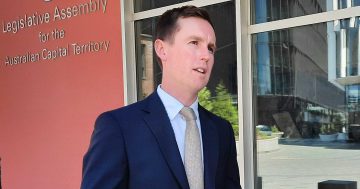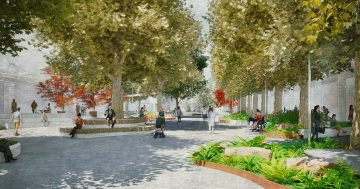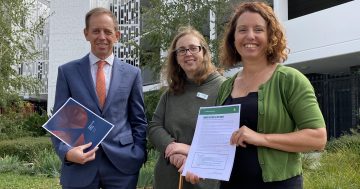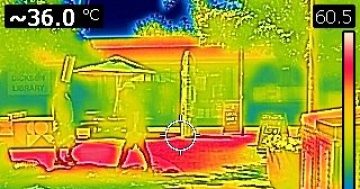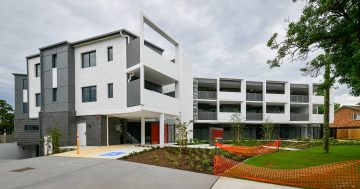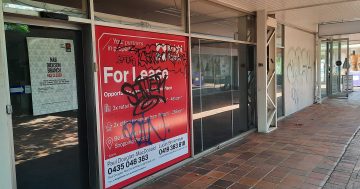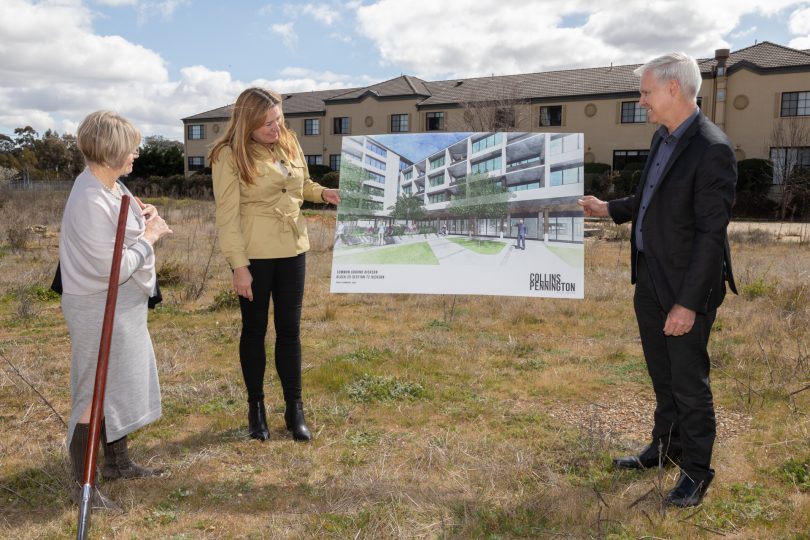
Housing Minister Yvette Berry at the sod-turning ceremony for Common Ground in Dickson. Photo: Michelle Kroll.
If there is one thing that Canberrans love, it’s a good planning stoush.
And in a town full of public servants with all the skills required to compile submissions, launch petitions and engage with government and the media, campaigns against development proposals can be marshalled and organised more efficiently than in most other jurisdictions.
Objectors may still be outgunned by the big developers and the bureaucracy, but they still give government and proponents a run for their money.
That is a good thing, and many a bad development has been improved if not rejected thanks to the tireless efforts of community activists who believe passionately in the national capital’s mission, and as a special place in which to live.
Yet there are signs that the perfect plan is becoming the enemy of the public good, as the Barr Government’s urban renewal program gathers pace, including the rebuild of the city’s public housing stock.
The Chief Minister constantly reminds us this is a 10-year, $1 billion program, although some say the government is only playing catch-up and it will still not deliver sufficient properties.
Like other cities, more affordable housing for those in work but struggling or locked out of the private rental market is also required and the government is moving to provide incentives so more of this type of housing can be built, while also calling for the Commonwealth to come to the party, particularly as part of the post-COVID-19 recovery.
This requires land, and this is where we are seeing friction in neighbourhoods across the city, and no doubt will see more as time goes on as the government is identifying sites in existing suburbs as well as new ones to re-house public tenants and build supported accommodation, particularly for older women.
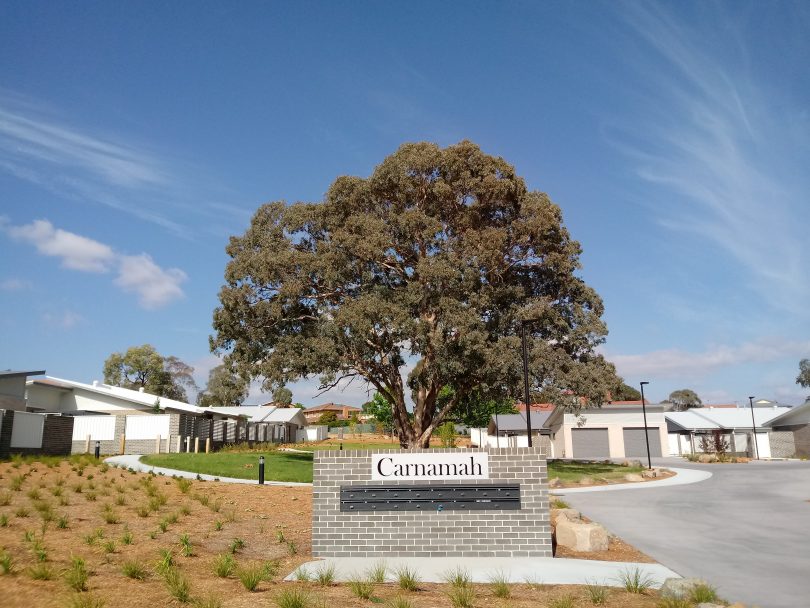
The Chapman housing project on Darwinia Terrace was completed late last year. Photo: File.
Whether it be in Chapman or Ainslie, some residents are worried about the loss of green space, density, traffic, bad design, and on the city’s edges, bushfire risk.
In fact, a whole range of typical Canberra development touchpoints, but there are also less overt fears about crime, neighbours from hell and effects on property values.
Most are quick to agree that they’re not opposed to public or social housing per se, just not in our street or a particular location.
The Common Ground project in Dickson met opposition due to its location, its multi-storey design and a desire for an integrated plan for Section 72 as a community use precinct.
Those concerns may be well-intentioned and government could do much better in its planning but people, and these will be women and children, need roofs over their heads.
Another proposal in nearby Ainslie on a YWCA Canberra-leased site will also provide housing for older women, who are most in need of help. Claims from some of the residents opposing the 10-unit development have gone over the top, and they should be happy with the concessions they have managed to win.
In Chapman, residents mounted a fierce campaign to stop a low-rise housing development and many months since its completion the sky has not fallen in.
Canberra’s home-owners have benefited enormously from the housing boom, racking up massive capital gains that have priced many others out of the market.
Nobody wants people living in cars or on the streets so unless we put the city’s battlers out of sight somewhere, Canberrans will have to share their neighbourhoods.
It doesn’t mean accepting bad planning or development, or the government steamrolling over communities but we should be wary of an attack of the NIMBYs delaying or stopping projects that will have a public benefit.
We should not shed any tears about the pulling down of what Greens leader Shane Rattenbury called ”old, cold and damp” public housing that needed to go, but be vigilant that the replacement is better and contributes to a diverse and equitable national capital.
Just because you have done well in your desirable, well-serviced suburb doesn’t mean others less fortunate don’t have a right to live there too.












